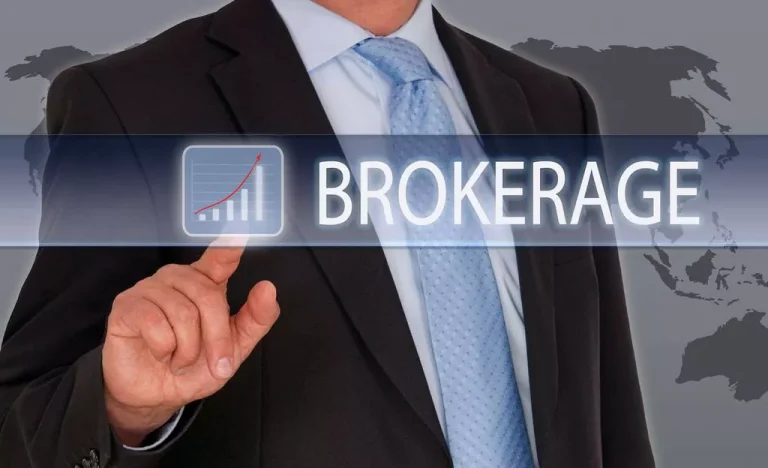Content
The asset mix of these target date funds, sometimes known as target funds or lifecycle funds, shifts over time to become more conservative as the investor’s target retirement date approaches. Institutional investors remain an important part of the investment world https://www.xcritical.com/ despite a flatshare of all financial assets over the last decade and still have a considerable impact on all markets and asset classes. Collectively, these actions can lead to substantial market movements, although institutional traders generally maintain a larger share of the overall market due to their resources and capital.
Institutional vs Retail Traders
These platforms provide sophisticated pricing models, Proof of space credit risk analysis tools, and access to multiple liquidity venues. They also enable the integration of diverse bond market data, making them suitable for large-scale fixed income trading operations. By contrast, retail investors are individuals who invest their own funds, either through a broker or directly. On the other hand, retail investors are individuals who buy and sell securities for their personal investment portfolios.
Popular Institutional Trading Platforms

Although no investment result is guaranteed, managing risk is critical for successful investing. Institutional investors know this best, so they use a plethora of resources to get as close to the correct prediction as possible. The world’s largest pension institutional stock trading fund, with $1.59 trillion in AuM, is the Government Pension Investment Fund (GPIF), Japan’s incorporated administrative agency and the country’s largest public fund investor. For comparison, the largest pension fund in the United States is the Federal Retirement Thrift, with $0.78 trillion in AuM.

Who is the world’s largest institutional investor?
They execute their trades through traditional, full-service brokerages, discount brokers, and online brokers. To begin with, institutional investors contribute over 90% to the total stock market trading volume. In other words, there are virtually no sectors where you won’t find institutional capital. With their significant wealth, influence, and expertise, institutional investors are considered much more sophisticated than individuals who invest their money directly. Therefore, it can be beneficial to follow in the footsteps of Wall Street whales. This guide will explain the top investment sectors according to institutional investors and their favorite strategies for beating the market.
Notable: Government Pension Investment Fund (Japan)
Digital and information technology, especially AI-oriented companies, have high growth and innovation potential. Additionally, the current digital transformation trend gives it leverage across industries. Institutional investors are big companies with teams of professional investment managers who invest other people’s money. Retail investors are individuals who typically manage their own investment (e.g. for retirement or college savings). The last category here is often designed for retail investors who are planning for retirement.
Despite the downturn of the post-pandemic period, healthcare remains a vital sector for institutional investors, especially within pharmaceutical, biotech, and medical device subsectors. Typical mutual fund offerings include money market funds, bond funds, stock funds, index funds, actively managed funds, and target date funds. Institutional investors are generally considered to be more proficient at investing due to the assumed professional nature of operations and greater access to companies because of size.

However, the main difference is that hedge funds are more difficult to get into and aim for higher risk and higher returns than mutual funds. Institutional trading can be spotted by monitoring large, block trades or unusually high trading volumes that move the market significantly. Tools like 13F filings, stock screeners, or specialized services such as Finbold Signals help track these trades in real time. Institutional investors can significantly influence stock market volatility through their large trades.
The investment in swaps, forwards etc. gives an edge to the institutional investors. Such exotic instruments are not available to retail traders usually since institutional investors have the huge funds needed for such investments. Their trades can significantly impact stock prices, liquidity, and even corporate governance. By understanding these dynamics, retail investors can navigate the market more confidently, aligning their moves with the powerhouses of the investment world. We can see that Curtiss-Wright does have institutional investors; and they hold a good portion of the company’s stock.
Although we outnumber institutional traders, they control a significant portion of the total assets traded in financial markets. Retail investors typically buy and sell stocks in round lots of 100 shares or more; institutional investors are known to buy and sell in block trades of 10,000 shares or more. Because of the larger trade volumes and sizes, institutional investors sometimes avoid buying stocks of smaller companies for two reasons. First, the act of buying or selling large blocks of a small, thinly-traded stock can create sudden supply and demand imbalances that move share prices higher and lower.
- Institutional platforms typically offer a wide variety of order types that retail traders do not have access to.
- These entities not only bring significant market liquidity but also have the ability to move markets through strategic actions and substantial capital deployment.
- It has consistently concluded that very few active managers outperform passive indices.
- To begin with, institutional investors have much more funds at their disposal than retail investors.
- Institutional investing makes up the vast majority of all trades in the stock market (more than 90%), leveraging tools and methods that are mainly unavailable to the rest of the investing public.
State Street, or State Street Global Advisors, to be precise, is the last member of the Big Three in institutional investing, with $4.4 trillion in AuM (as of June 2024). It has made a reputation for its “spider” (SPDR) ETFs, which notably includes SPDR S&P 500 ETF Trust (SPY), one of the largest and most popular ETFs in the world. The third on the list is the Union Bank of Switzerland, or UBS, with $5.87 trillion (as of April 2024) in global AuM.
When opting for an institutional investor to track, ensure they align with your investing style, such as long- or short-term time horizon and similar target companies and sectors. As we said, institutional investing represents the bulk of the global stock trade. With size and volume alone, their transactions reshape the market landscape whenever the “whales of Wall Street” move.
Their strategies delineate a vista where the alignment of financial heft and infrastructural intellect forecast an unprecedented potency in shaping market trajectories. It is imperative, therefore, for investors of all scales to comprehend the burgeoning dynamics that institutional behaviors engender in navigating the continually transforming market arena. Institutional platforms typically offer a wide variety of order types that retail traders do not have access to. Additionally, institutional platforms include sophisticated execution algorithms that help traders minimize market impact and trading costs. These algorithms can split orders into smaller chunks and distribute them across multiple venues to avoid significant price slippage.
They also engage in private placements and initial public offerings (IPOs) that might not be available to the general public. In the realm of high-frequency trading (HFT) and algorithmic trading, institutional traders gain an edge by executing large volumes of trades at lightning speed. Embracing these advanced trading mechanisms allows for the exploration of market inefficiencies and the capitalization on momentary pricing anomalies, all while minimizing the trader’s footprint in the market. Asset allocation forms the cornerstone of institutional risk management, with the strategic distribution of investments across various asset classes designed to optimize returns while managing risk.
